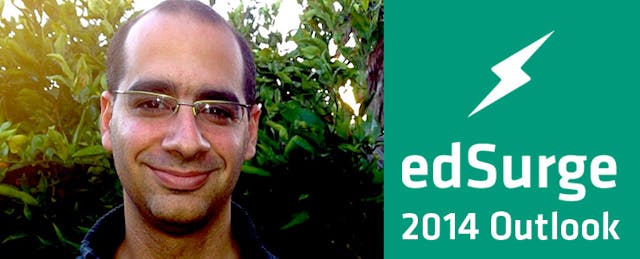There is no better time to be an educator. It seems like every year, new tools provide teachers with ways to engage students and foster their creativity. In this coming year, l anticipate significant changes in teacher professional development, BYOD integration, and blended learning, as well as the beginning of a greater emphasis on social and emotional learning.
Grassroots Professional Development
The growth of grassroots Professional Development is reaching a point of inflection--in large part thanks to social media tools like Twitter. For example, the number of participants in Ed-Chats on Twitter is booming because teachers find the conversations relevant to their practice. (Case in point: CAEdChat, which occurs every Sunday at 8:00pm, has 1543 followers.) A few moderators (who are teachers themselves) bring up topics that are of interest to educators. Typically, hundreds of teachers chime in with their opinions, and resources.
EdCamps are also on the rise. These are in-person “unconferences” where hundreds of teachers get together and propose topics to discuss in breakout rooms. Those topics that receive the most votes from the crowd get covered, meaning that teachers feel empowered to drive the professional development narrative and are therefore more engaged. I expect districts and conventional conferences will begin using more of this model in the coming year.
For reference, the next two big Ed-Camps will take place on Feb 22nd (EdCampSV will be in Palo Alto and EdCampLA will be in West Hollywood).
BYOD Adoption
Bring Your Own Device adoption will also accelerate in the coming year. While the BYOD model has its challenges, schools are beginning to understand the advantage of this model compared to adopting solely one device (think L.A. unified and iPads), especially as web-based applications become more robust.
Once a school becomes BYOD, teachers are able to use formative assessment tools more often. These tools allow them to have a record of what students understand, adjusting their instruction rapidly according to the data collected. More importantly, these tools allow students to receive rapid feedback about their level of understanding, which also encourages them to be metacognitive. I predict that some great formative assessment products that will be used even more in the coming year are Geddit, Flubaroo, and Infuse-Learning.
Beyond using Google Drive and Sites as a creation and collaboration tools, schools now recognize the value of using Google Apps Scripts (programs that automate spreadsheets after information is collected from a Google Form) for the purpose of automating school processes. For example, the Autocrat Script, sends email notifications to counselors and teachers after a student fills out a Google Form when signing in for detention; another tool, FormEmailer, can quickly create a mail merge when information needs to be sent to parents.
Blended Learning
As blended learning spreads more rapidly, the use of videos in instruction will as well. Yet instead of creating videos from scratch, teachers are using other videos and tweaking them to fit their instruction. Video editing tools that incorporate formative assessment, such as Ed-Puzzle, will be used significantly more in the coming year by teachers as they improve their methods of “front loading” information and checking for understanding.
Emphasis on computational thinking and learning programming logic is also rising rapidly. The HourOfCode initiative and apps like Kodable are gaining significant traction on the App Store, providing evidence of the “need to code” movement. There is also greater focus on students actively engaging in creating hardware that is meaningful to them, demonstrated in part by the emergence of MakerSpace.
Social and Emotional Learning
Perhaps most importantly (a warning--this is not “edtechy”!), schools are starting to recognize the importance of social and emotional intelligence. I myself created a Positive Psychology class at Gunn High School, and I expect to see more positive psychology interventions in schools in the coming year and years to follow.
Teachers are beginning to understand that teaching students concrete techniques to be more resilient in the face of adversity, while also emphasizing mindfulness exercises to catch their cognitive distortions, actually goes a long way toward allowing students to be more creative, more successful, and most importantly, happier.


